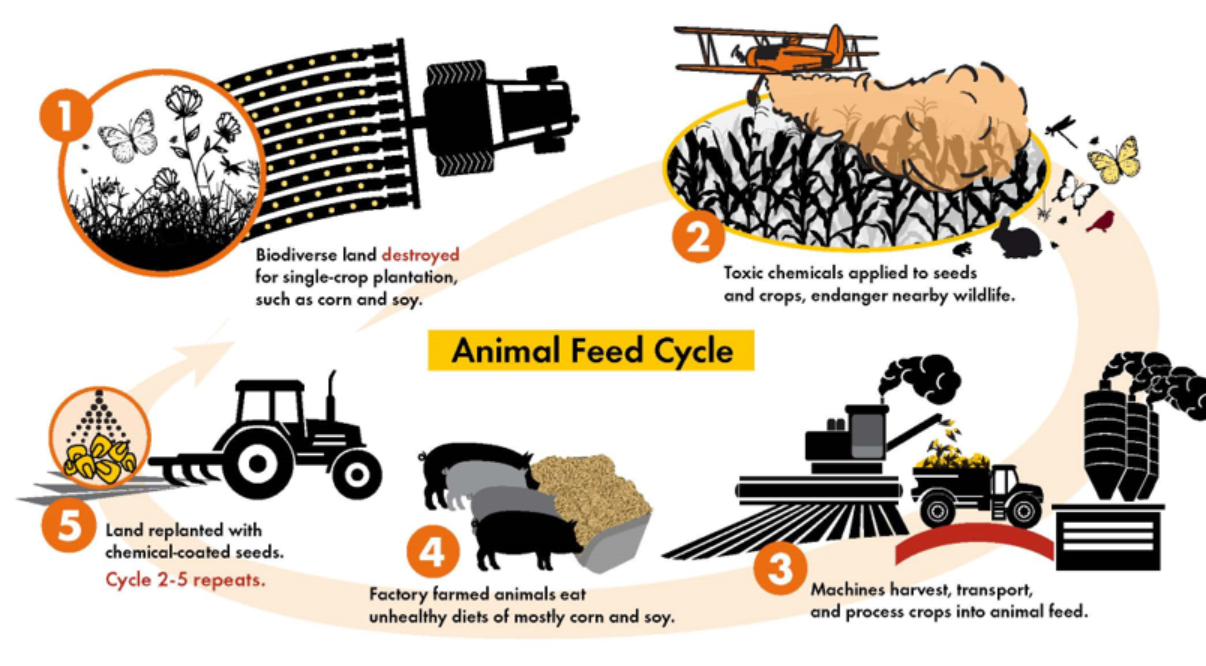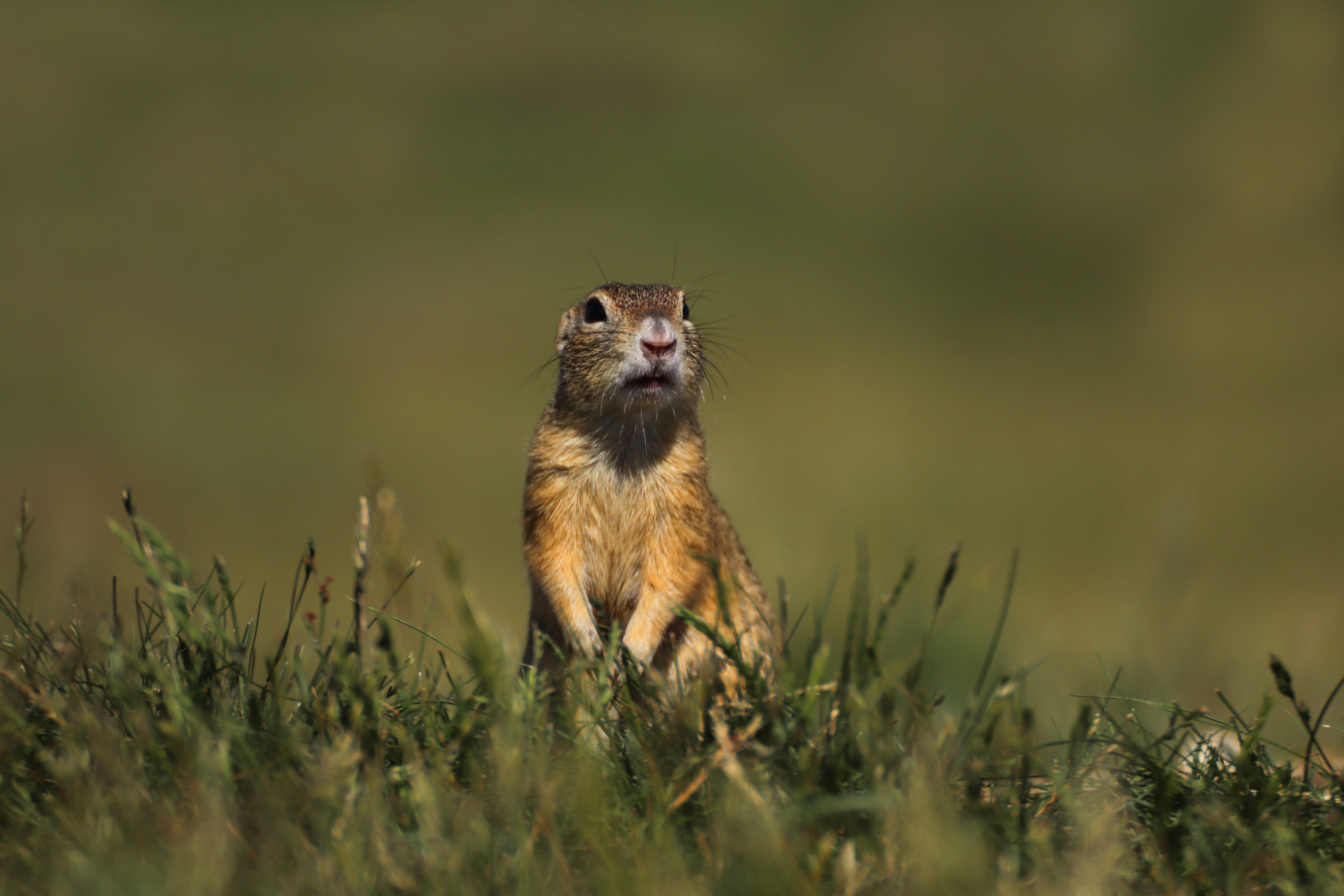US meat industry using 235m pounds of pesticides a year, threatening thousands of at-risk species, study finds
Exclusive: Glyphosate can harm or kill 93 per cent of plants and animals protected under the Endangered Species Act, a new study reveals
More than 100,000 tons of pesticides are being sprayed each year onto feed crops for factory farms in the US, animal welfare and conservation groups have revealed.
A new report, shared exclusively with The Independent, found that about 235 million pounds (117,500 tons) of herbicides and insecticides are used annually across America’s farmlands, solely on farmed animal feed production, posing a potentially fatal risk to thousands of endangered and threatened species.
Meat and dairy production are driving the use of these pesticides. One-third of agricultural lands in the US are dedicated to corn and soy, primarily to provide calorie-dense diets for fattening up farmed animals.
Corn and soybean production globally accounts for about half of all sales of pesticides. Around three-quarters of the soy produced around the world feeds livestock, along with up to 45 per cent of corn grown in the US.
The most commonly-used substances in the US are glyphosate and atrazine, according to the Collateral Damage report from World Animal Protection, US (WAP) and the Center for Biological Diversity (CBD). The report is based on data from 2018, the most recent full year available.
World Animal Protection programs director Cameron Harsh toldThe Independent that it was vital to recognise the “full breadth” of meat and dairy’s environmental footprint.
“These hazardous pesticides used in animal feed production have an immense impact on wild animals and ecosystems that consumers are likely not very aware of,” they said.
The groups say that 100 million pounds of glyphosate is used on corn and soy for animal feed in the US, and has the potential to harm or kill 93 per cent of plants and animals protected under the Endangered Species Act.
The research also points to adverse effects that glyphosate exposure has on human health, noting that the World Health Organization says it is “probably carcinogenic to humans”.
“More than 13,000 lawsuits have been filed in the US alleging that the pesticide causes non-Hodgkin’s lymphoma”, the researchers state.

Atrazine, the second most popular pesticide, is banned in 35 countries. It is likely to harm or kill more than 1,000 protected species in the US, the report says, including the highly-endangered whooping crane, the San Joaquin kit fox, and the California red-legged frog.
“These chemicals are manufactured and sold by just a handful multinational corporations, many of which are headquartered in countries that have banned their use due to concerns for the environment and human health,” the report states.
It also highlights how converting more and more land for mono-crops like soy and corn is wiping out biologically-diverse habitats. From 2018 to 2019, about 2.6 million acres of US grasslands were converted to row crop agriculture, with 70 per cent used for soy, corn and wheat.

Stripping out native grasses and vegetation decimates the habitats and food sources of a wide-range of species.
For example Utah prairie dogs, which live only in the US, are a keystone species, meaning that without them an ecosystem would be dramatically altered or fail to exist entirely. The new report highlights the species as particularly imperilled by the use of glyphosate.
“Endangered species like monarch butterflies, San Joaquin kit foxes and whooping cranes are threatened by these pesticides every day just to fuel the cruel and unsustainable factory farm industry,” said Lori Ann Burd, environmental health director at CBD.
“This is outrageous and should be a call to action for everyone who cares about animals.”
Grasslands are also a little-recognised but crucial natural ally when it comes to battling the climate crisis. Grasses can store large amounts of carbon in the soil, sometimes as much as forest soils, according to a report from the Swedish University of Agricultural Sciences.
The environmental groups are calling for consumers to reduce their consumption of meat and dairy and switch to more plant-based diets in order to have a lighter tread on the planet, curb the growth of factory farming and protect endangered wildlife populations.
This article has been updated to reflect that a total of 235m pounds of pesticides are used solely on farmed animal feed production annually, including 100m pounds of glyphosate.


Join our commenting forum
Join thought-provoking conversations, follow other Independent readers and see their replies
Comments